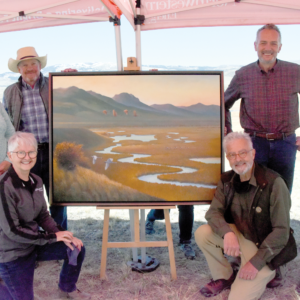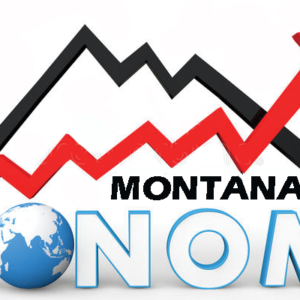There’s good news and bad news when it comes to how Montana compares with other states regarding its economic performance.
In the recently released “Rich States, Poor States” study conducted each year by the American Legislative Exchange Council (ALEC), Montana ranks 15th in economic performance by three basic measures , but as the study projects into the future, Montana ranks a dismal 33rd in terms of the state’s economic outlook (based on 15 variables) — which while a six point jump over last year, is still in the same range in which the state has hovered for the past 14 years.
The gist of Rich States Poor States 14-years of analysis is that “states that spend less and tax less, experience higher growth rates than states that tax and spend more.”
The state that shines the most is Utah, as it has for seven consecutive years. Other shining stars are Florida, Oklahoma, and Wyoming. Both North and South Dakota are in the top ten.
The state with the worst record is New York, which is only slightly bettered by Vermont, New Jersey, Illinois, Minnesota and California. Oregon and Washington are the only two western states ranked below Montana.
“I don’t think it is any coincidence that Utah has one of the lowest unemployment rates in the nation, one of the highest upper mobility rates, one of the lowest poverty rates, and in the pandemic this past year we were one of only two states that had increased in employment,” boasted Stewart Adams, President of the Utah Senate, about his state’s economic record. He further noted, “We have seen Medicaid reimbursements go down. We have seen poverty go down, and we have seen upward mobility go up.” And, he added that without a minimum wage law his state is above the federally proposed minimum wage of $15 an hour. He attributed it all to the state’s fiscally restrained tax policies that seem to go hand and hand with high performing states.
“Free markets work because freedom works,” declared Adams.
That is exactly the lesson that the study is hoped to convey, by its authors, Dr. Arthur B. Laffer, a Reagan Economist, and Stephen Moore, FreedomWorks Economist. In a recent discussion with Adams, and with Jonathan Williams, ALEC Chief Economist, they said that they hoped that the study would be seen as the results of 50 laboratories of economic experience. It’s an amazing opportunity to benefit from the experiences of other states, as they pursue different strategies, demonstrating what works and what doesn’t. The puzzle is why so many political leaders doggedly ignore the lessons, often doubling down on policies that make their economies worse.
And, tax rates matter! What people have to pay in taxes, one kind or another, matters when it comes to where they choose to live, work and start a business. In fact, being able to choose where they live and work is predicted to be more the reality now – now, that people have the ability to work remotely. With that increased freedom, people will make changes that will impact states in a significant way. The results of the 2020 Census demonstrate that most dramatically, as some states lost representatives to other states, as people “voted with the feet.” Laffer said that that he expects to see them voting with their feet faster than ever before as many states double down, while others take advantage of lessons learned.
Laffer quoted Dr. Richard Vedder, an Emeritus Professor of Economics at Ohio University, in saying that “high taxes don’t redistribute income, they redistribute people.”
Montana was noted in their discussion as one of the three states that will likely benefit the most from people seeking quality of life in their moving about. Montana, Utah and Idaho are the fastest growing states, they said and are attracting people “now that physical proximity to their jobs” is less of an issue.
Williams noted that a state without an income tax should also be attractive to remote workers.
Moore predicted “you will see a real divergence in policies in many cases between red states and blue states. Blue states need to start rethinking their policies and processes. A lot of progressive policies are not working in blue states. They are putting themselves in deeper holes .. that is why you have hundreds of billions dollars in bailouts.”
Montana rates a respectable 15th place in terms of its economic performance because in 2020 its gross domestic product was 5 percent, population grew by over 6 percent or by about 50,650 people, and employment growth was the 20th fastest in the nation. These are economic indicators are considered a bell weather since they are readily impacted by legislative policies.
Montana is one of the states that the authors of the study lament as suffering from not taking advantage of the lessons learned by other states.
Montana has some factors working in our favor. Not having a sales tax is one of those factors. States that avoid one of the three most common taxes – sales, property or income – always seem to have an edge in comparison to those states who impose all three. Montana ranks the very best in the nation when it comes to minimizing the impact of sales taxes on citizens.
But in both the other taxing areas, income and property, Montana imposes severe rates with a vengeance that plummets the state right back to the bottom. When it comes to top income tax payers Montana is 32nd, which means that wage earners will fare better in 31 other states than in Montana, with the top marginal personal income tax of 6.9 percent. In general Montanans pay $18.34 per $1000 in income, ranking it 42nd worst in the nation. And, in other kinds of taxes Montanan’s pay $20.94 per $1000 in income, ranking the state as 39th worst.
Montana ranks 38th in terms of high property taxes, with taxpayers paying $36.38 per $1000 of income.
The State’s most recent changes to tax law in 2019 and 2020 added 15 more cents in taxes per $1000 of income – creating another dismal ranking of 23rd in comparison to what other states are doing.
Another economic positive for Montana is the State has little debt. Montana has a debt of 4.5 percent as a share of tax burden, which elevates its ranking to 8th in terms of low debt.
Montana taxpayers also pay a lot of public employees. The number of pubic employees per 10,000 people is 573.1, ranking the state at 39th in the nation.
In terms of liability risks the state is ranked 7th best, and 23rd in terms of its minimum wage at $8.75.
Montana ranks dead last because it is not a Right to Work State, which means employees can be coerced into joining a union.


